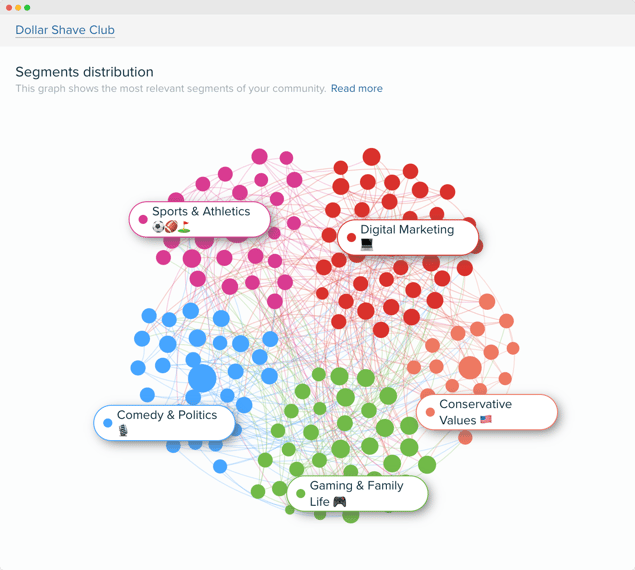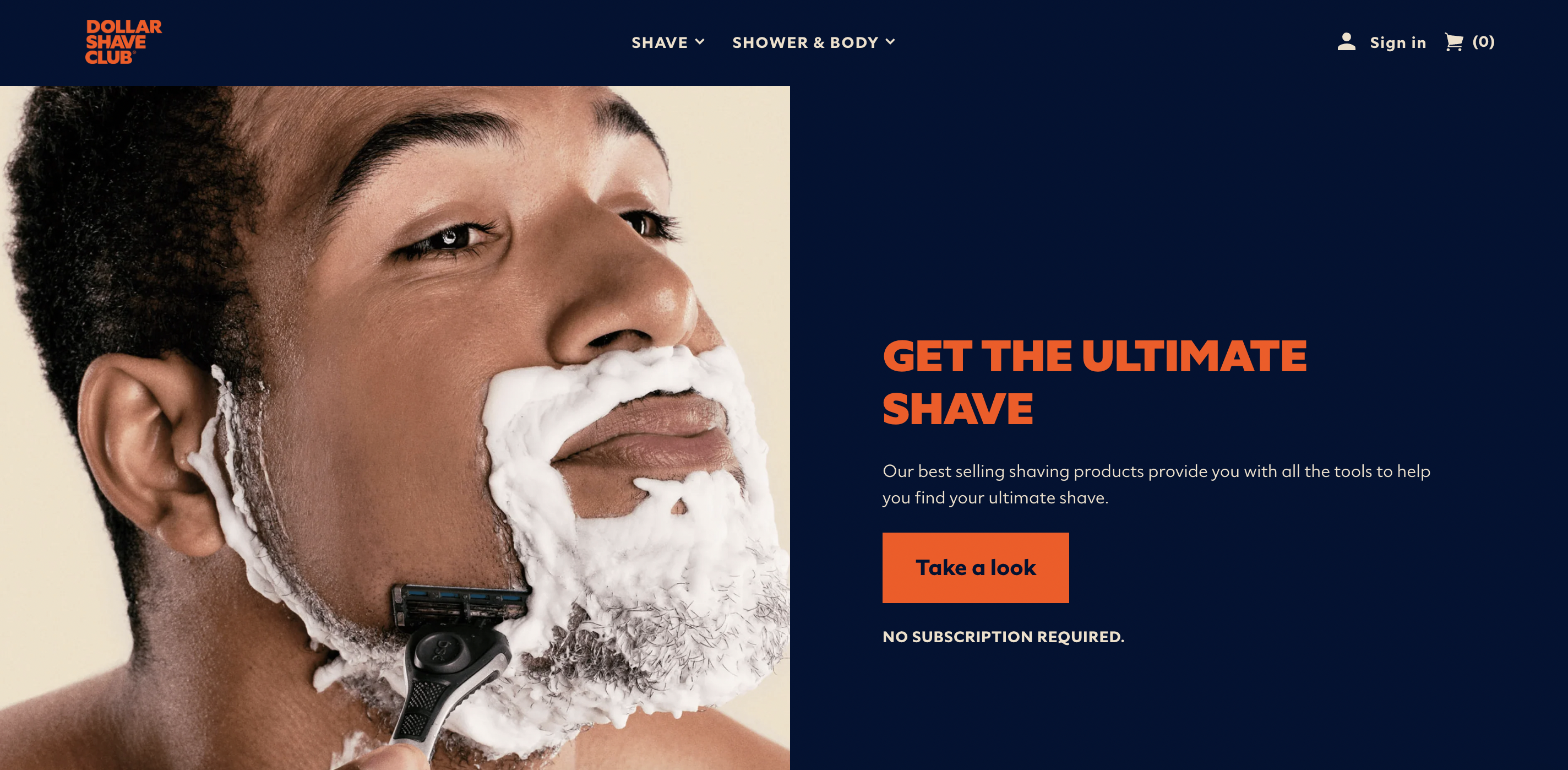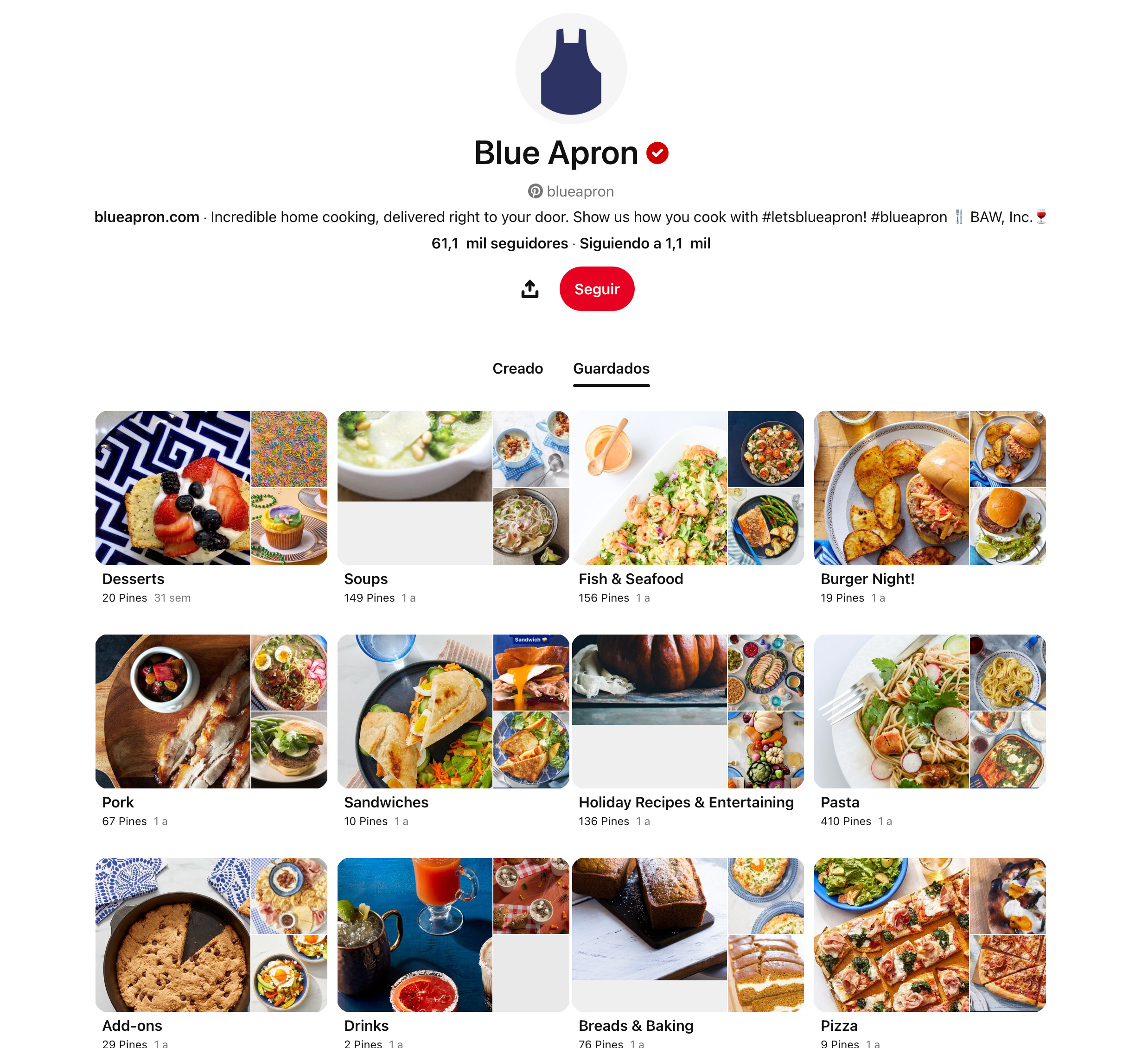3 brands making eCommerce their new playground for D2C sales
The internet has brought us many wonderful things. Greater knowledge, easy ways to connect with friends and family, cat memes. But perhaps one of the most delightful things the internet provides is online shopping, it’s like opening a little gift to yourself every time you receive a package.
eCommerce gives brands the opportunity to speak to, and sell, products and services directly to their customers. This allows brands to collect important data that can inform and strengthen their offering, and for us marketers, provides the perfect opportunity to learn more about our elusive customers and develop a two-way strategy that fosters trust and loyalty.
We wanted to take a closer look at brands making eCommerce their new playground. Being able to talk to consumers directly has led to some seriously creative and exciting campaigns from the likes of Barkbox, Dollar Shave Club, and Blue Apron. Let’s take assess the current state of eCommerce:
- As the cost-of-living crisis continues to bite in Europe, brick-and-mortar stories are seeing a slump in growth. But eCommerce is bouncing back, with predictions that eCommerce alone will account for 13.7% of all retail sales by 2027, up from 12.6% this year. By the year 2040, it’s estimated that an incredible 95% of all purchases will be made through eCommerce.
- So, what sets eCommerce apart from IRL stores? Personalization. 30% of UK shoppers prefer retailers that use their preferences and past behaviors to tailor their shopping experience, making first-party data a vital part of the marketing toolkit. Furthermore, 90% of US consumers say they find personalized content more appealing than generic messaging.
- eCommerce growth has been accelerating for a few years now, with eMarketer reporting that the pandemic boosted online sales by almost 50% in the US in 2020. Furthermore, digital advertising spend by eCommerce brands has also increased by 50% year-on-year, proving that brands are considering eCommerce one of their most important routes to market.
- That said, eCommerce comes with its own mega brands. 59% of millennials always or often go to Amazon first when online shopping, making the giant online retailer one of your biggest competitors. But 87% of these shoppers are likely or very likely to compare costs across several different websites or apps before committing to a purchase, making price a differentiating factor.
- Interestingly, 43% of all e-commerce traffic comes from Google's organic search, with customers not necessarily being interested in brands as much as the product itself. They’re likely to move through the customer journey, exploring your site before committing to a purchase.
Before we deep dive into the data and some marvelous marketing campaigns, let’s take a moment to refresh ourselves on what eCommerce and D2C marketing campaigns can entail.
An eCommerce marketing campaign involves selling your products directly, typically through a website owned by you, and is supported by digital marketing tactics such as paid social, paid search, influencer marketing, subscription marketing, email and more!
Whatever your channel of choice, the internet is awash with opportunities to reach new consumers at a fraction of the cost of traditional marketing channels. Let’s get started.
Audience analysis: Barkbox, Dollar Shave Club & Blue Apron
We decided to do things a little differently this month. We wanted to understand what makes the consumers of three specific brands tick and, using Affinio, suggest potential partners for future campaigns. After all, brand partnerships can cause major buzz around your launches.
To help us unlock useful insights, we ran affinity reports in Audiense for Barkbox, Dollar Shave Club, and Blue Apron, as well as dedicated Affinio reports. Here’s what we learned.
BarkBox audience
- As you may remember from our pet care spotlight, pet care spending is set to reach nearly $188 billion in the next five years and 91% of pet owners consider their pets to be part of the family. This means the market for pet products is booming and BarkBox, a monthly subscription box packed with goodies for dogs, is leading the charge.
- According to our data, 25- to 34-year-olds account for approximately 44% of the total audience, 66% of the audience is female, and 57% are based in the US. Unsurprisingly, 82% of them are interested in pets! Millennials and Gen Z are clearly the primary market for BarkBox.
- Looking at influencers and brands, we see a good mix of pet-focused brands as well as music icons and meme accounts. Cats of Instagram, We Rate Dogs, and Luv Kitten Daily all appear in the top five social media affinities, as well as pet personalities such as Doug The Pug, Lil Bub and Grumpy Cat.
- If we dive a little deeper into the full BarkBox audience, we can break their followers down into six distinct segments: Entertainment lovers, music fans, family-focused people, sports fans, movie and entertainment, and pet care and rescue. This means BarkBox has tons of opportunities to reach their customers in different ways, for example by partnering with a pet-mad musician or creating a movie-themed subscription box!
- What drives them to purchase? According to IBM personality insights, this audience is sentimental, particular and analytical. They’re more likely to be influenced by friends and family when it comes to purchase decisions, but online advertising is also a strong motivator.

Dollar Shave Club audience
- What does the average Dollar Shave Club consumer look like? 80% of their audience consists of men, which makes perfect sense given the majority of their marketing features imagery of men. Much like BarkBox, their audience skews toward millennials and Gen Z, who make up almost half of their total online audience. Almost 80% are US-based, where the company was founded.
- This audience breaks down in multiple very distinct segments. We have five in total: digital marketing and tech enthusiasts, gamers, comedy lovers, sports fans, and a more political segment.
- This diversity in interests is represented in the influencers and brands tab. Elon Musk, Amazon, Google, Jimmy Gallon, Dwayne Johnson, and NASA all appear prominently. There are also several YouTubers and motivational speakers, opening up potential for creative influencer marketing.
- Sports is an overwhelming interest for this audience with basketball and baseball both ranking as the top interests. We also see this represented in their media affinities, where ESPN, SportsCenter, NFL Network, ProFootballTalk, and Barstool Sports all appear as shared interests.
- We know where to find ‘em and who they’re influenced by, so how do you reach them online? This audience is 67 times more likely than your average global consumer to be on LinkedIn, they’re also nearly 50 times more likely to be on Medium, Reddit and Pinterest.

Blue Apron audience
- Finally, we have Blue Apron, a meal kit delivery service with a difference. Approximately 45% of this audience is aged 25- to 34-year-old and women make up just over 60%. As Blue Apron is a US-based subscription, 84% of their total audience is based there, but it’s interesting to see they have a small number of followers in Canada, the UK, Brazil and India, suggesting opportunities for expansion.
- We also see cities dominating the top locations for Blue Apron’s audience. New York, San Francisco, Los Angeles and Chicago all appear prominently as the primary locations for this audience, suggesting their customer base consists of time-poor professionals looking for an alternative to DoorDash every night.
- Food is a universal need, which means this audience isn’t as tightly knitted by affinities as the other two brands we’ve analyzed. That said, it makes for more interesting outside-the-box thinking for brands, as they can tap into a few different passions such as pets, sports, and travel.
- We do see some interesting influencers and brands appearing for this audience. Media outlets appear prominently, with The New York Times, The Wall Street Journal, CNN and Huffington Post all appearing, suggesting this audience likes to be well informed. We also see several food and beverage brands including Food Network, Food & Wine, and Starbucks.
- What persuades Blue Apron’s ideal customer to spend money? Friends and family are the strongest purchase influencer factor, they’re significantly more likely to be influenced by word-of-mouth from trusted sources than they are advertising or organic social.

How Barkbox, Dollar Shave Club & Blue Apron are making D2C their playground
BarkBox
Leading the eCommerce pack, BarkBox is a best-in-show example of using data-driven marketing to build a pack of loyal customers. They make data about their customers their USP in the way they approach their products and their marketing. In fact, they discovered that utilizing personalized customer data to send targeted emails can boost their revenue by up to 97%. The stuff of marketing dreams, truly.
They call it the No Dog Left Behind programme, in which they contact approximately a third of their three million dogs every month to collect essential data on their dogs’ habits and behaviors to create more personalized product offerings. That’s right, their dedicated Happy Team makes sure man’s best friend is getting only the best toys and treats, every single month.
They’re also no stranger to email and SMS marketing. Their focus on targeted conversations led them to test two email marketing campaigns for the launch of their Durable Dental Chew – a product developed after receiving feedback that some of their chews were too weak for ‘Super Chewers’ – sending emails to all subscribers and a special Super Chewer segment. This increased conversion rate by 30%.
What we particularly love about BarkBox is their commitment to humor on their social channels. They are firmly tapping into their customer’s love of memes and entertainment with a, let’s be honest, fairly low-fi approach to their Instagram channel that focuses more on entertainment rather than explicitly selling the product. Clearly it works, given they have 1.8 million followers on Instagram alone.

One of our favorite social media moments from the brand is their annual National Squirrel Appreciation Day activity, in which disenchanted squirrels who are tired of being chased by overenthusiastic dogs. This year they kept it low-key with a squirrel Q&A, but in previous years they launched a ‘Down with BarkBox’ campaign, which included a total social profile takeover and memes posted by the angry squirrels to spark conversation. They were able to get even more eyes on the campaign by pitching the takeover as a PR crisis and sending out a fake press release.

Clearly collaboration is in the brand’s DNA, given their previous themed boxes such as Star Wars and Mean Girls inspired toys, so where could BarkBox go next? It’s obvious isn’t it? Cats. It’s time to partner with the frenemy. Using Affinio, we discovered a strong affinity with pet food brand Purina, who are well known for their high-quality cat food. They could consider a Valentine’s Day style campaign where they encourage cuddling up to your feline friends, featuring special treats for households with both cats and dogs.
If that’s too controversial, another option is to expand on their No Dog Left Behind profile by partnering with animal charities and rescues. We found The Animal Rescue Site and Furry Friends Rescue had high affinity with the BarkBox audience, it could be a perfect partnership for Giving Tuesday to donate 15% of their proceed on that day for a special box featuring ethical treats and stories of rehomed dogs from different rescues who have found their perfect humans.
Dollar Shave Club
Based in California, Dollar Shave Club has quickly established itself as a leading men’s subscription box, delivering razors and other personal grooming products on a monthly basis. On the surface, it sounds quite dull, right? Thankfully, their humor and their product are sharp.
When the brand first launched in 2012, their CEO Michael Dubin created a series of hilarious promotional videos which very quickly went viral. It had almost five million views within the first three months, and to date, it had over 28 million views on YouTube. While the feel of the video is very low effort early 80s infomercial, the script is top notch and the quality excellent, with a message that clearly connected with Dollar Shave Club’s intended audience.
Since then, Dollar Shave Club has made rich media its main marketing creative. They’ve of course continued to use videos in many of their campaigns and used customer stories to support their claim of how f*cking great they are, but they’ve also expanded into YouTube shorts, TikTok, and even a regular podcast called I Learned A Thing In The Bathroom, which aims to teach you about an intriguing topic in the time it would take you to complete a shave. Prime dwell time.
While much of the branding is very clearly focused on men, we also love that they’re slowly diversifying their audience. Their TV spot ‘Our razors are borrowed for a reason’ shows the perils of having such great razors – your significant other stealing them. To get around this, they offered a limited deal where you’d get an extra razor in your monthly subscription box for just $5, because a razor this good will definitely get stolen.
What’s most notable about Dollar Shave Club after over ten years is their strong brand identity. From day one they’ve been clear about their tone, their visuals, and their proposition which is simply, stop overpaying for brand names and get great, affordable razors sent directly to you. They have consistency across all marketing touchpoints, regardless of the channel, and they also have a clean and easy-to-use website that makes driving conversions easy.

How could Dollar Shave Club take their marketing to the next level? Collaborations could be the key here. Using Affinio, we discovered an especially strong crossover between Dollar Shave Club’s customers and Warby Parker, the glasses brand. This could present an interesting opportunity to invite customers to put their best face forward, with killer glasses and a great shave, perhaps bundling a new glasses purchase with a discount on Dollar Shave Club subscriptions or vice versa? You know what would look great with your new sunglasses? A well-trimmed beard.
Blue Apron
As mentioned earlier, food is universal. At the end of the day, we all need to eat. But depending on how busy your professional and / or personal life is, we don’t all have time to cook healthy, delicious meals. Meal kit companies such as HelloFresh have quickly swept in to fill the gap, alongside more convenient food delivery options such as Deliveroo and DoorDash. But the one that was voted the best overall meal delivery kit by the New York Post was Blue Apron.
In 2016, it was reported that Blue Apron were able to grow their company by 500% in just one year through content marketing. While competition has gotten stiffer in the last eight years, Blue Apron has addressed this with a data-driven, personalized approach to their marketing.

They used segmentation research to gain a deeper understanding of what matters to their customers. In 2022, they launched a campaign that differentiated them from their competitors by focusing on providing better value by having better values. In essence, they invest in direct relationships with suppliers and have a positive impact on the environment by providing locally supplied food in their kits. It seems like a small step but given that purpose-driven marketing is a top priority for brands, it’s the perfect message.
As our analysis showed, word-of-mouth is a strong purchase influence factor for Blue Apron’s customers, and clearly the brand has recognised this. Their organic social strategy tends to focus on sharing photos of the product alongside customer testimonials, which really home in on the quality of the ingredients, the ease of the recipes provided, and the benefits of using their meal kits.
They also launched their ‘What can cooking do?’ video campaign a few years ago, which involved creating and repurposing UGC to highlight the significant – and impact – of cooking for their customers, and how it’s about so much more than just putting food on the table. The campaign focused on the struggles of ordinary people to provide fresh and healthy meals for the families, and how Blue Apron had helped change their relationship with dinner-time to create a moment of togetherness.
We also love Blue Apron’s pivot to TikTok! With over 400,000 likes and almost 65,000 followers, the brand has clearly embraced TikTok’s fascination with cooking videos. They’re also clearly tapping into food trends and an interest in cooking delicious takeaway favorites at home, as demonstrated by their Thanksgiving leftover Crunch wrap video, clearly inspired by Taco Bell. We’re hungry now.
@blueapron Thanksgiving leftover crunchwrap >>> leftover sandwich #sandwich #leftoversandwich #thanksgiving #crunchwrap #crunchwrapsupreme ♬ original sound - blueapron
Partnerships are clearly on Blue Apron’s marketing radar, as demonstrated by their collaboration with Panasonic in 2022. This partnership aimed to promote Panasonic’s new four-in-one countertop appliance which combined a Convection Bake Oven, Air Fryer, Inverter Microwave, and a FlashXpress Broiler. Blue Apron created a range of recipes that could be made in the product which acknowledged that many of their customers may not just be low on time, but also low on kitchen space, but still allowed them to create delicious meals at home.
Our Affinity reports presented some interested future collaborations for Blue Apron. For example, there’s a decent crossover between their customers and food shows such as Bravo’s Top Chef and Hell’s Kitchen, perhaps they could sponsor a show or an episode where contestants must create their own Blue Apron inspired dish. Or they could make the most of their new TikTok channel by partnering with celebrity chefs or influencers to create organic social content that will help them reach a broader audience.
Key takeaways
Before we wrap up another wonderful month of spotlight, take one final sip of coffee, and let’s review our key takeaways. How can you make the most of eCommerce in the coming months?
- Leverage data to create impactful campaigns: It’s more important than ever for brands to start building up first-party data. Once you have this data at your fingertips, you need to bring it all together for every area of the business to create a 360-degree view of your customers. If you understand what makes your ideal customer tick, you’re in a better position to craft impactful D2C campaigns, as demonstrated by BarkBox.
- Nail your creative and proposition: One common thread for all three of the brands we’ve examined today is the importance of great branding. The ability to nail your creative creates a solid foundation for the rest of your campaign to be built upon, as it provides brand consistency and improves recognition for consumers across each and every marketing channel. A great proposition and brand also set you firmly apart from the competition, as Dollar Shave Club have demonstrated.
- Make your campaigns multi-channel: We talk a lot in marketing about those famed 18-touchpoints, aka, a potential customer needs to see your marketing a minimum number of times before they make a purchase. This makes it critical that your eCommerce campaigns encompass multiple channels. Use that beautiful creative to create a consistent, eye-catching campaign across your social, your advertising, your newsletters, and wherever else you choose to run your campaign.
Ready to take the next step in audience intelligence for your marketing? With tools like Audiense and Affinio, conducting in-depth audience analysis and discovering actionable takeaways makes creating tailored marketing strategies easier than ever.






